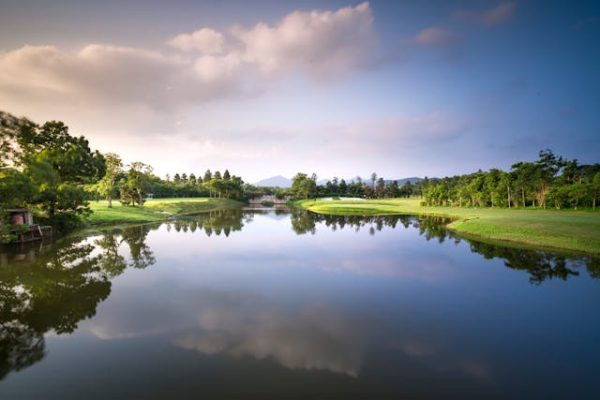
Aeration in ponds is crucial for keeping the water clean and healthy for life by adding oxygen to still water bodies to break down organic materials and prevent excessive algae growth; this way, ponds support a diverse range of flora and fauna while maintaining clear and pleasant smelling conducive water, for fish and plant survival.
Various Varieties of Lake Aerators
Selecting the aerator relies upon a range of factors, such as the dimensions of the pond and its depth, along with particular needs to be met by it. There are aerator options tailored for different scenarios available in the market.
Surface Aerators
Floating aerators work well in ponds that are not too deep—up to six feet deep, to be precise! These devices sit atop the water. Create ripples to help with oxygen circulation and reduce algae buildup while enhancing the water’s aesthetics.
Subterranean Aerators with Dispersed Air Streams
Submerged diffused aerators— referred to as bottom diffusers—are ideal for deeper ponds as these devices release air bubbles from the base of the pond to distribute oxygen evenly throughout the water column. This approach aids in decomposing organic waste at the bottom of the pond to deter the accumulation of sludge and toxic gas.
Spouting Aerators
Adding fountain aerators to your pond not only improves the water quality but also enhances its visual appeal by creating a captivating spray of water in the air that boosts oxygen levels as well! Whether you have a large pond to beautify and aerate with style and efficiency – fountain aerators are the way to go!
Things to Take Care When You Are Selecting the Aerator for Your Pond
When picking the right aerator, from a set of large pond aerators for sale involves thoughtful evaluation of multiple aspects, taking into account the unique requirements of the pond and its residents to make a well-informed choice.
The Depth of a Pond
The dimensions and depth of the pond play a role in determining the suitable aerator to use. Preferably, surface aerators are ideal for ponds, while deeper ponds require subsurface diffused aerators for effective oxygen distribution throughout the water body.
Availability of Power Sources
Having access to a power source is also essential when considering aerators for various applications. Electric aerators are commonly preferred for their effectiveness and dependability in situations. However, in regions where electricity is scarce or unavailable, windmill aerators emerge as a viable substitute. Alternatively powered aerators present another environmentally friendly choice by harnessing solar energy through panels to operate the aeration system.
Financial Constraints
Budget is a factor to consider when choosing an aerator for your needs primarily because surface aerators are usually cheaper than subsurface diffused aerators in terms of cost efficiency over time and require an upfront payment; for windmill aerators, if you’re looking to make a financially wise choice, after comparing the costs and benefits carefully.
Maintenance Needs
Keeping a pond in shape involves regular maintenance tasks that vary depending on the type of aerator used for aeration. The surface aerators typically need upkeep compared to subsurface ones that may need occasional checks to keep their diffusers clear of blockages. Windmill aerators generally require maintenance but might occasionally need lubrication and parts replaced to keep them running smoothly.
Enhancing the Quality of Water
Improving aeration plays a role in maintaining water quality by enhancing oxygen levels to help break down organic materials and lessen the buildup of harmful substances in water bodies. As a result of this process, the water becomes more transparent and healthier, benefiting the health of aquatic organisms.
Improving the Wellbeing of Fish
Fish flourish in water that is rich in oxygen levels, and maintaining aeration helps prevent the creation of areas known as dead zones where fish struggle to survive due to low oxygen levels. Maintaining aeration ensures a steady oxygen supply, which is essential for promoting fish well-being and minimizing the chances of disease outbreaks.
Preventing Excessive Algae Growth
Algae growth frequently occurs in ponds due to water flow and insufficient oxygen levels, which can be a common issue to deal with. Aerators are practical tools to counteract this problem by disrupting the still conditions that encourage algae growth and maintaining the water clean and free from algae. This not only enhances the visual beauty of the pond but also safeguards aquatic life from the harmful effects of excessive algae proliferation.
In Summary
Choosing the large pond aerator plays a crucial role in keeping the water clean and helping aquatic life thrive in your pond environment. Different types of aerators come with benefits, so it’s essential to assess your pond’s requirements. Good aeration promotes water, boosts fish well-being, curbs algae development, and prevents stratification issues. Opting for the aerator supports a flourishing pond ecosystem benefiting both nature and those who appreciate a beautiful well, well-managed pond setting.

